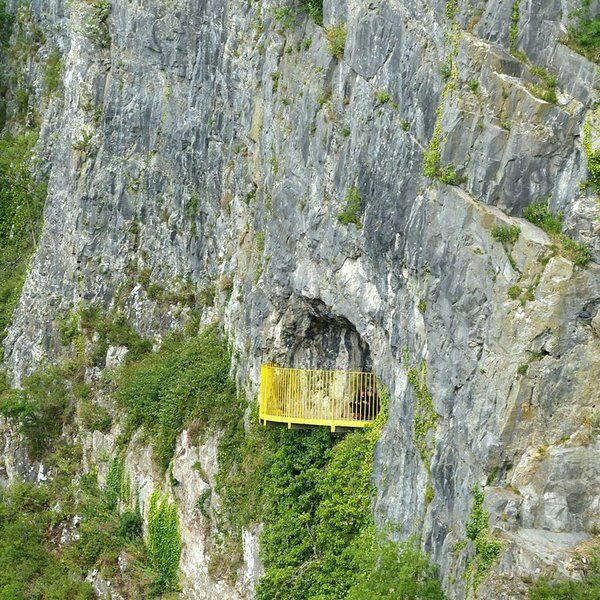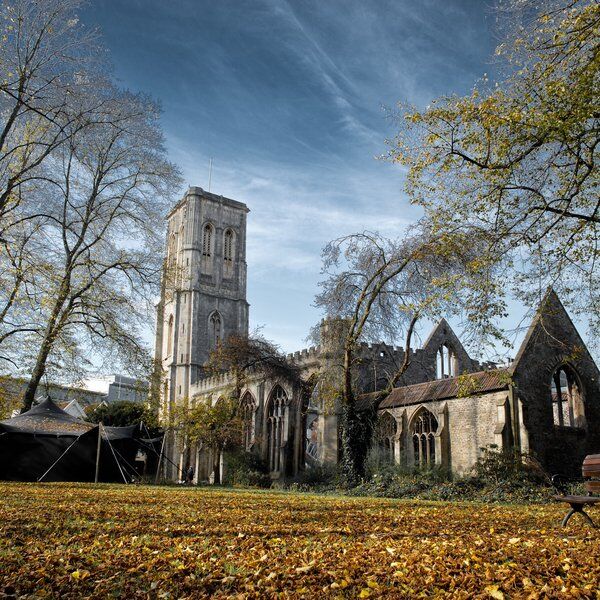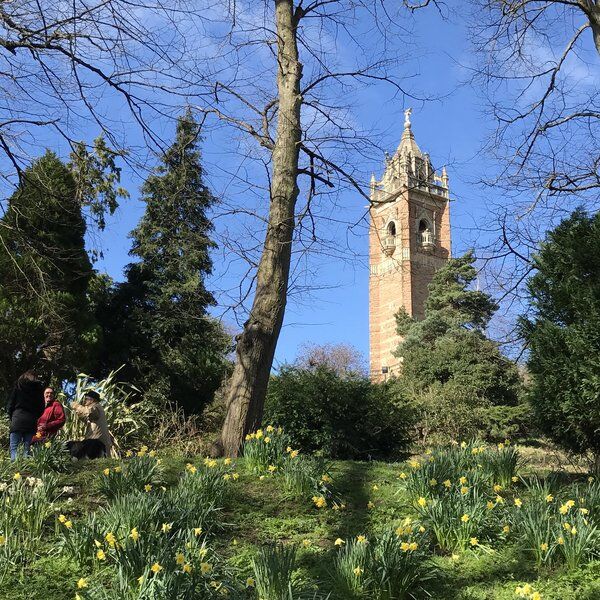
Discover Pero’s Bridge in Bristol
Pero's Bridge is situated within Bristol’s iconic floating harbour. Completed and officially opened in 1999 by Paul Boateng MP, this distinctive pedestrian footbridge links Queen Square and Millennium Square.
Spanning St Augustine's Reach, Pero's Bridge not only connects two busy squares along the waterfront but also embodies Bristol’s commitment to remembering and taking accountability for its difficult past. As visitors navigate its sleek walkway, they can reflect on the complex history that shaped Bristol.

Creating Pero’s Bridge
Pero’s Bridge was designed by the talented Irish abstract sculptor Eilis O'Connell in collaboration with Ove Arup & Partners engineers, and is a marvel of engineering with its swirling forms and horn-like sculptures, known as the "horns of plenty”. Comprising three spans, the bridge features fixed outer sections and a central segment that can be lifted to a length of 11 metres with a generous 9-metre navigation channel. The horns, the most recognisable features of the bridge, serve as counterweights for the lifting section. They are also the reason the bridge has been nicknamed the "Horned Bridge" or "Shrek's Bridge".
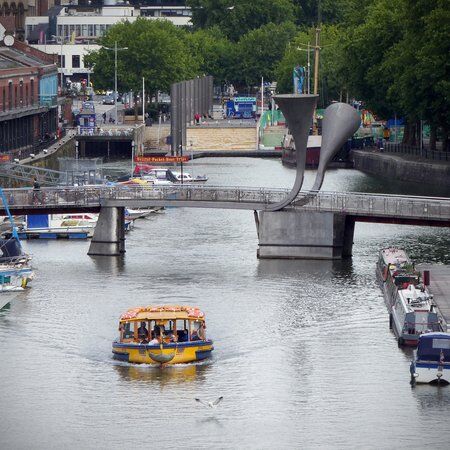
Naming Pero’s Bridge
Who was Pero?
Pero's Bridge, stretching over the harbour between Society Cafe and Za Za Bazaar in Bristol, was named after Pero Jones and is a tribute to his life and legacy. Pero was an enslaved African who was just 12 years old when he was purchased in 1765 by John Pinney, a merchant who enslaved hundreds of people on his sugar plantations in the Caribbean. Pero worked on Pinney's Mountravers plantation in Nevis until the family relocated to Bristol in 1783 where they resided in the Georgian House.
In Bristol Pero was Pinney's personal servant for 32 years. Despite efforts to improve his health, Pero succumbed to illness at the age of 45, never experiencing freedom in his lifetime. Today, Pero's Bridge is a reminder of the individuals whose lives have shaped our world, and the responsibility we have to ensure that their stories are remembered.

Why call it Pero's Bridge?
The idea to name the bridge after an enslaved individual stemmed from the efforts of Paul Smith, a former Labour cabinet member and Bristol City Council's Chair of Leisure. Smith wanted to confront the uncomfortable truths of Bristol’s past and honour those whose stories were overlooked.
"I proposed for the bridge to be named after an enslaved person following interactions with campaigners and abolitionists who were asking that the memories of slaves needed to be given a place in Bristol’s history."
This proposal emerged amidst ongoing discussions within the leisure services committee, with key figures like Stephen Williams, former councillor and later Liberal Democrat MP for Bristol West, advocating for a statue or permanent memorial to commemorate Bristol's role in the slave trade.

Criticising Pero’s Bridge
"I suggested a competition to name the bridge... Ian Onions rang me up and told me that Paul Smith had decided to call it Pero’s Bridge, as the city’s memorial to slavery."
The decision that Pero’s Bridge would act as the permanent memorial was met with scepticism, with Williams criticising it as "a silly gesture... [and] a totally inadequate way to face up to the city’s past." Despite differing opinions, the bridge's name has since been vindicated as a necessary step towards acknowledging Bristol's complex past.
"It’s hard to believe that 22 years later the name of the footbridge is still the only physical recognition of slavery in Bristol."
Despite its importance as the only memorial to the slave trade in Bristol aside from a plaque on the side of M Shed, Pero's Bridge remains largely unknown to the general population. Its significance is not readily apparent, lacking signage or indications of its purpose. As a result both Smith and Williams note that there is still a long way to go to recognise the atrocities of the city’s past.
This was evident in June 2020 when the nearby statue of Edward Colston, a Bristolian slave trader, was toppled by protestors during the George Floyd protests and lay at the bottom of the harbour for four days. This incident highlighted the ongoing debate surrounding Bristol's historical legacy and the role of public monuments.

In discussing the removal of controversial statues, Williams advocates for accompanying memorials with plaques or information panels that tell the full story, "warts and all." He emphasises the importance of education in making memorials meaningful and suggests that memorials like Pero's Bridge provide a starting point for acknowledging Bristol's dark history.
Despite its controversial history, Pero's Bridge remains a focal point for both locals and visitors alike. In 2015, the bridge was transformed as part of an art installation by Japanese artist Fujiko Nakaya, whose veil of fog sought to provoke a discussion on climate change.

Love Locks at Pero’s Bridge
As Bristol continues to grapple with its past and strive for a more inclusive future, Pero's Bridge has evolved into a meeting spot and an integral part of Bristol's Harbourside. It serves as a link between the bars, restaurants, and attractions surrounding Millennium Square, such as the Bristol Aquarium and We The Curious, and the historic charm of the Old City, home to Arnolfini contemporary arts centre and the Hippodrome. In recent years, the bridge has also become adorned with "lovelocks," left by couples; their initials inscribed on the locks and the keys tossed into the water.
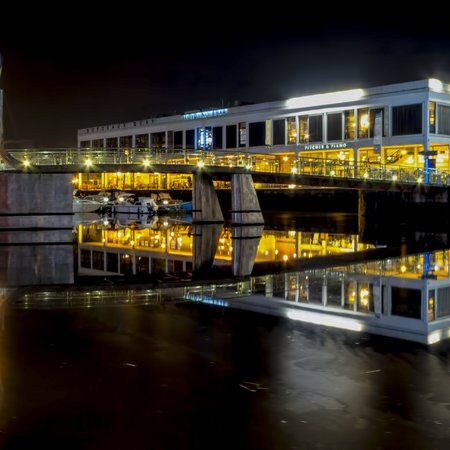
Origins of the Lovelock Tradition
The tradition of attaching love locks to bridges has its roots in a legend from a small Serbian town during the time leading up to World War I. The tale tells of a schoolmistress named Nada and her lover, an army officer named Relja, who pledged their love on a bridge before he was sent to fight in Greece.
After Relja found a new love and Nada died of grief, locals began attaching padlocks to the bridge, tossing the keys into the river to ensure fidelity. This tradition has since spread to cities worldwide, including Bristol, where Pero's Bridge has become a canvas for heartfelt messages and declarations of love.
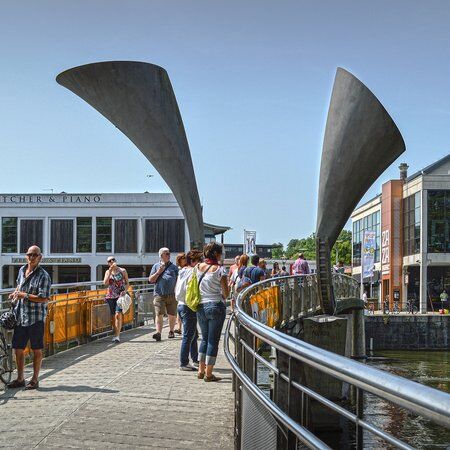
Mixed Sentiments
The "lovelocks" on Pero's Bridge act as time capsules, capturing milestone moments and declarations of affection. While some celebrate birthdays, weddings, and new beginnings, others convey messages of reunion, celebration, and remembrance. Despite periodic removal by the council due to concerns about structural damage, the locks continue to reappear, reflecting the depth of sentiment attached to Pero's Bridge.

Interested in finding more places like this? Try one of our Bristol Treasure Hunts - untangle cryptic clues as a team, as you are taken on a journey to the most unique, unusual and bizarre corners of England.











